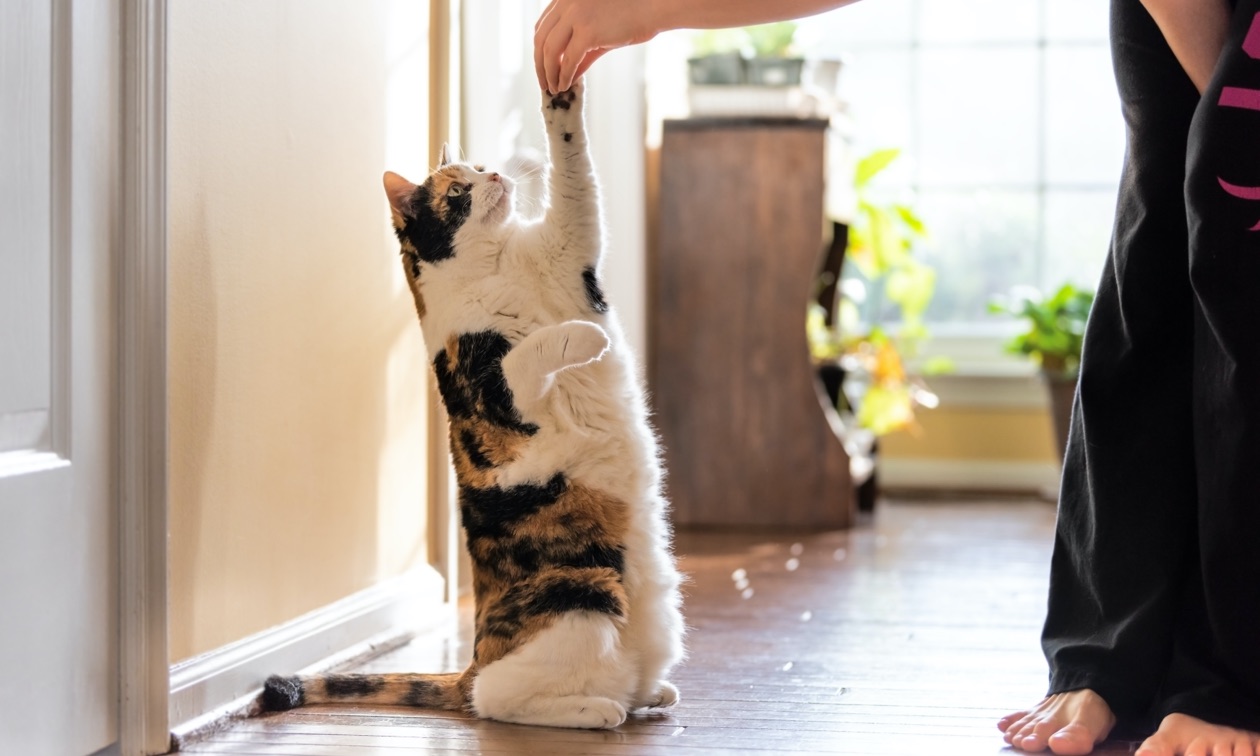Cats are mysterious enough on their own, without pesky myths and misconceptions mucking things up. Even though indoor cats typically live a safer, healthier lifestyle than their free-roaming feral friends, they aren’t without risk. So today, we’re debunking some of the most common myths about indoor cats.
My Indoor Cat Can’t Get Fleas because My Home is Clean
Even if your home is sparkling clean, your indoor cat can still get fleas. Fleas can make their way indoors on shoes, with visitors, or through other pets that go outside. Even rodents that may take refuge in your home during the cooler months can bring in fleas. The best way to truly protect against fleas is to keep all your pets, including indoor-only cats, on a regular, year-round flea preventative.
Indoor Cats Only Need One Litter Box
To minimize the chance of your cat going outside their litter box — and choosing your floors and laundry instead — they should have a choice when it comes to where they potty. Cats are likely to avoid a box that already has “deposits” in it or one that they’ve developed a negative association with. The general rule-of-thumb is to have one more box than the number of cats you have. Ideally, keep the litter boxes in different locations and not next to one another.
My Indoor Cat Can’t Get Heartworms
Even if you have screens on your windows or live on a high floor, mosquitoes can still enter your home. Mosquitoes can carry heartworm larvae that can infect cats when those mosquitoes bite. One heartworm can cause significant problems in cats, including sudden death. While there are treatments for heartworm in dogs, there aren’t any safe and effective treatments for heartworm in cats. Thankfully, there are safe and effective preventatives for cats.
Indoor Cats Miss Their Hunting Instinct
While your indoor cat isn’t hunting prey like their outdoor feline friends, you can provide the same stimulation indoors to help to satisfy that instinct. You can engage your cat’s primal instinct with interactive feeders, puzzle toys, laser pointers, and other fun toys and play.
Pregnant Women Must Get Rid of Their Cats
Pregnant women can have cats, but some caution should be exercised when dealing with the litter box. When cleaning a litter box, pregnant women can be at risk for Toxoplasma, a parasite which can live in cats and be shed in cat poop. Exposure to the Toxoplasma organism early in pregnancy can cause birth defects or miscarriage in women[1].
If you have cats and become pregnant, be sure to talk with your doctor and always wear gloves and wash your hands after scooping the litter box. Cleaning the litter box every day can minimize exposure risk since Toxoplasma isn’t infective in fresh stool.
Indoor Cats Don’t Need Veterinary Care
It’s important for indoor cats to get a veterinary check-up at least once a year. Even indoor-only cats can develop a variety of medical conditions and diseases. After all, diabetes, hyperthyroidism, high blood pressure, kidney disease, and even cancer don’t respect walls and doors. Indoor cats can also contract viral, bacterial, and parasitic infections, as these nasties can come into your home on your shoes and clothes, other cats, or dogs in the home that can go outside.
Indoor Cats Don’t Need to be Microchipped
If your cat gets out of your home, how will you find them? Indoor cats do occasionally get out, especially during home renovations, when moving, or even when friends and family come to visit. An ASPCA survey found that only 74% of lost cats are reunited with their owners[2]. If your cat gets out and doesn't have visible identification or a microchip, the probability of them getting returned to you is significantly lower than if they are easily identified.
The Outdoors Stay Outside
While your cat may not leave the house, you certainly do. And with you, comes a variety of unwanted “guests” like ticks, fleas, worm eggs, etc. Visiting friends, pets, and rodents can carry them in, too. Even neighborhood strays that visit your cats from the other side of a screen door or window can pass along germs and parasites (e.g., fleas). The best line of defense for your indoor cat against outside invaders is to keep them up-to-date on their vaccines and on parasite protection year around.
ZPC-00194R1
IMPORTANT SAFETY INFORMATION: The safe use of Revolution Plus has not been established in kittens less than 8 weeks old or in breeding, pregnant or lactating cats. Reported side effects in clinical trials included lethargy and anorexia. Use with caution in cats with a history of neurologic disorders. Sarolaner, one of the ingredients in Revolution Plus, is a member of the isoxazoline class, which has been associated with adverse reactions such as tremors, ataxia, and seizures. Reactions have occurred in cats with or without a history of neurologic disorders. In humans, Revolution Plus may be irritating to skin and eyes.
Revolution Plus is a simple-to-apply, quick-drying, small-volume, monthly topical solution that protects against fleas (Ctenocephalides felis), ticks (black-legged or deer tick [Ixodes scapularis], Gulf Coast tick [Amblyomma maculatum] and American dog tick [Dermacentor variabilis]), ear mites (Otodectes cynotis), roundworms (Toxocara cati), hookworms (Ancylostoma tubaeforme), and heartworms (Dirofilaria immitis) for cats and kittens as young as eight weeks of age and weighing 2.8 pounds or greater. See Prescribing Information.
- Parasites - Toxoplasmosis (Toxoplasma infection). Retrieved February 13, 2019 from https://www.cdc.gov/parasites/toxoplasmosis/gen_info/pregnant.html
- How Many Pets are Lost? How Many Find Their Way Home? ASPCA Survey Has Answers. https://www.aspca.org/about-us/press-releases/how-many-pets-are-lost-how-many-find-their-way-home-aspca-survey-has-answers









